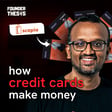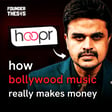
Building the B2B Payments Stack for India | Sundeep Mohindru @ M1xchange
Small businesses in India often face delays in payments from large corporations due to complex bureaucratic processes and stringent payment terms. The TReDS system, developed by the RBI, aims to resolve this. With TReDS, businesses can receive immediate payment by selling their invoices to a financier, who then collects the payment from large corporations. In this episode, Sundeep shares his experiences as a serial entrepreneur and provides insights into how TReDS is transforming B2B payments. Listen to learn more about this exciting development and its potential to reshape the business landscape.
Get notified about the latest releases and bonus content by subscribing to our newsletter at www.founderthesis.com
Read more about M1xchange :-
2.M1xchange Surpasses INR 1,00,000 Crore in Invoice Discounting Throughput
3.In conversation with Mr. Sundeep Mohindru- CEO , M1xchange
5.M1xchange offers cross-border bill discounting from GIFT city, says TReDS will boom



















